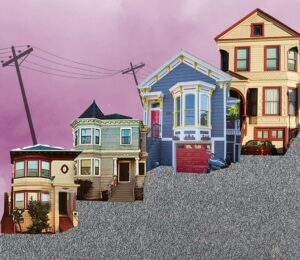The F. W. Olin Library: it’s a curated collection of cool, full of fabulous facts, daring data, and triumphant texts. It is comprised of enough startlingly lovely book covers that you almost can’t help but cheer (but please don’t. I’ll shush you).
Over the next weeks, I hope to demonstrate the wonderful array of library resources available to you as part of the Mills College Community.
From the incredible books and magazines found in our general collection, to the treasures found in our Special Collections, to the sublime knowledge found in our collection of databases, I want you to know why libraries are my favorite places on earth and if you are already a library lover, hopefully you will find more reasons to view libraries as amazing.
One of my favorite things about the library is the remarkable variety of stories you can find about virtually everything. Pick a topic, any topic and you find a story.
The story might begin in a newspaper article I discovered on Google, then continue in an encyclopedia, weave a plot through one of our online databases, and reach the startling conclusion in a book I found on the shelves. It is a magical process!
One of the best examples of this began one day when I was wearing my lucky polka dotted outfit at the reference desk.
A patron came over to ask me a question, paused to appreciate my lucky suit, and then asked me who invented polka dots. I was stunned. I had spent my entire life taking polka dots for granted, never before considering that they might have a history.
Telling the patron that I would find out more about polka dots and get back to her, I ran off into reference shelves and quickly grabbed one of my favorite resources, the Oxford English Dictionary. Sure enough, I was able to find their entry for Polka Dot.
It was right there under the main entry for Polka! What did that mean? It meant that polka dots, in fact, had everything to do with the polka.
Reading on, I discovered that the polka had its first mention as having been danced in Prague in 1835. It swept across Europe becoming so popular that business owners did their best to link their products to it the same way that today’s fast food restaurants attach themselves to every single animated movie that comes out. There were polka dresses, polka hats, polka curtain-bands, and polka dots!
Triumphantly, I reported my findings to the library patron, bringing over volume XII of the Oxford English Dictionary so that she could read it all for herself. She seemed happy to have an answer, but quickly excused herself and went back to her research paper.
For me, however, this was just the beginning. The Mills Library had just subscribed to the newly created New York Times, a historical database that has almost every single article published in the New York Times back to its origins in 1851 (predating historic Mills College by only one year).
I figured that with the first reports of polka dots having happened in Prague in 1835, a time that had no Internet, television, or even radio, it would take some time before the polka and polka dots would make it to the United States.
Sure enough, it was on March 26, 1880 that the polka dot was first mentioned in a New York Times article, a piece about that season’s new fashions that were certain to find their way into all the best wardrobes. Better still, I found an advertisement in the May 4, 1879 issue from the shop Lord & Taylor that described polka dots as being “especially fashionable.”
Discovering that the pattern that made up my favorite outfit had such an awesome history and would have been considered especially fashionable in 1879 made it even more special. It also heightened my love of libraries that I could make such an unexpected discovery.
That love was increased again when the library subscribed to the online edition Oxford English Dictionary, which allowed me to search the entire 20+ volumes in seconds. Using that magnificent resource, I found out that a person who excitedly jumps around and exhibits the characteristics of the polka can be described as “polkaic.” Libraries make me polkaic. Hopefully, they make you polkaic as well.



